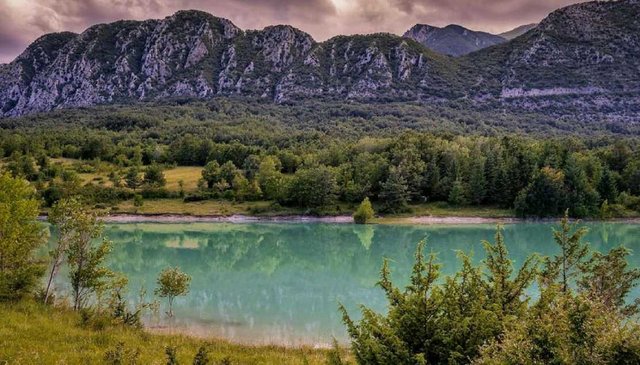The village overlooking the lake is a real poetry
In Molise there is a magical and beautiful place: it is Castel San Vincenzo, a village where you can discover nature and history
A small architectural jewel and a place out of time to discover the beauties of nature. It is Castel San Vincenzo, a small medieval village located at the foot of the Mainarde, overlooking a lake, in the magnificent setting of the National Park of Abruzzo, Lazio and Molise.
This tiny center has less than 600 inhabitants , but in the past it was one of the most important cities in the area. It is no coincidence that here was the Benedictine monastery of San Vincenzo al Volturno . Even today, visiting the archaeological area, it is possible to admire the frescoes kept in the Epiphanius Crypt .
The structure has a Greek cross shape, with vaulted ceilings and is decorated with paintings from the early Middle Ages . Going past the porticoed courtyard, where there is a garden, it is possible to reach the refertorio, preserved to perfection and with a brick floor. Then you enter the Hall of the Prophets , in which there is a pictorial cycle with the twelve prophets standing out and standing in a row.
Walking in the historical center you will find yourself taking a dip in the past. In the central square dedicated to Celestino V is the Fontana Fraterna, created by reclaiming bas-reliefs and fragments of Roman monuments. The church of San Francesco and that of Santa Maria Assunta stand out in all their beauty . Also worth seeing is the church of Santa Chiara, famous for its nineteenth-century Neapolitan style bell tower, one of the most beautiful in Molise .
The history of the ancient monastic complex is told in the Chronicon Vulturnense , a miniated code found in the Vatican Apostolic Library , where it is said that the monastery was founded by three nobles, Paldo, Taso and Tato between the seventh and eighth centuries. century. Later Charlemagne in 787 granted the monastery special privileges, stating that for importance it was similar to the most famous European abbeys.
In the first half of the century the area housed 350 monks, with ten churches and land holdings present throughout Italy. Following a series of events - first the earthquake of 860 , then the invasion of the Arabs - led to the exhaustion of the power of the monastery.
